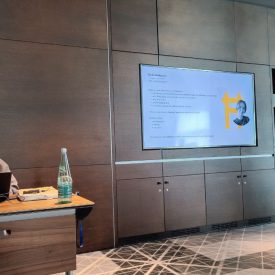
Operating PostgreSQL as a Data Source for Analytics Pipelines – Recap from the Stuttgart Meetup
PostgreSQL user groups are a fantastic way to build new connections and engage with the local community. Last week, I had the pleasure of speaking at the Stuttgart meetup, where I gave a talk on “Operating PostgreSQL as a Data Source for Analytics Pipelines.”
Below are my slides and a brief overview of the talk. If you missed the meetup but would be interested in an online repeat, let me know in the comments below!
cdc_v1.0.reveal-Data_Egret
PostgreSQL in Evolving Analytics Pipelines
As modern analytics pipelines evolve beyond simple dashboards into real-time and ML-driven environments, PostgreSQL continues to prove itself as a powerful, flexible, and community-driven database.
In my talk, I explored how PostgreSQL fits into modern data workflows and how to operate it effectively as a source for analytics.
From OLTP to Analytics
PostgreSQL is widely used for OLTP workloads – but can it serve OLAP needs as well? With physical or logical replication, PostgreSQL can act as a robust data source for analytics, enabling teams to offload read-intensive queries without compromising production.
Physical replication provides an easy-to-operate, read-only copy of your production PostgreSQL database. It lets you use the full power of SQL and relational features for reporting – without the risk of data scientists or analysts impacting production. It offers strong performance, though with some limitations: no materialized views, no temporary tables, and limited schema flexibility. Honestly, there are more ways analysts could harm production even from the replica side.
Logical replication offers a better solution:
- It allows schema adaptation (e.g., different partitioning strategies)
- Data retention beyond what’s on the primary
- Support for multiple data sources feeding into one destination
However, it also brings complexity – especially around DDL handling, failover, and more awareness from participating teams.
The Shift Toward Modern Data Analytics
Data analytics in 2025 is more than just reports (although reports are still alive and kicking). It’s about:
- Real-time data delivery pipelines
- ML-specific data workflows
- Data Lakes and Lakehouses
- Cost-aware, regulation-compliant architectures
Postgres can still play a major role – but with caveats.
Data Lakes and CDC: The Bridge Between OLTP and Analytics
Tools like Apache Iceberg, Trino, and Apache Spark form the backbone of modern analytical stacks.
Postgres, when paired with Change Data Capture (CDC) solutions, enables streaming operational data into these systems.
CDC with Postgres includes tools such as:
- Low-code tools like Airbyte
- Debezium: a mature CDC engine, often embedded into scalable platforms
- Apache Kafka: adds stream processing, useful for ML use cases
- Apache Flink: fast and powerful, enabling complex enrichment workflows
New tools like PeerDB are also emerging, moving away from Java-based enterprise tooling and leveraging performance benefits of Go and Rust.
Choosing the right CDC setup depends on:
- Your team’s skillset
- Latency and transformation requirements
- Regulatory constraints
Best Practices for Operating PostgreSQL in CDC Setups
- Proper instance tuning – especially WAL and autovacuum configurations
- Plan CDC carefully – know what to capture and how to resume after issues
- Use workbooks or runbooks to handle stuck pipelines, failovers, and upgrades
Should Postgres Be Your Data Lake?
While some vendors offer “all-in-one” analytics platforms, PostgreSQL stands out for its:
- Ease of management
- Integration flexibility
- Strong community and extensibility
Still, it’s important to assess whether Postgres should serve as your primary analytics engine or as a robust source system. It integrates well with modern lakehouse solutions and can deliver data to ML infrastructure quickly and reliably.
Conclusion
PostgreSQL has grown as an open ecosystem, making it easy to connect with others — including ML data platforms. With the right setup, it can serve as a powerful source for real-time, enriched, and ML-ready analytics. But success depends on thoughtful architecture, solid operations, and a deep understanding of the tools surrounding your stack.
Interested in learning more? Download our whitepaper for hands-on guidance on using PostgreSQL with Change Data Capture pipelines.






